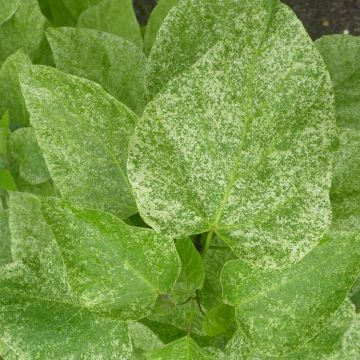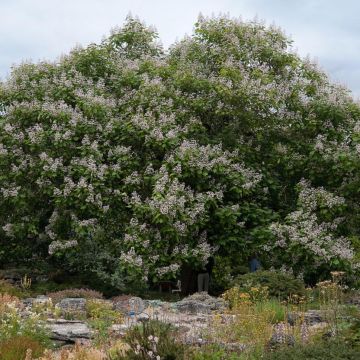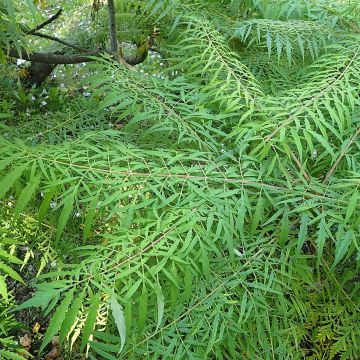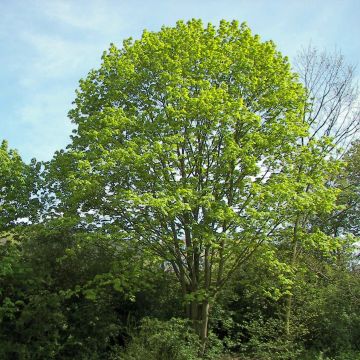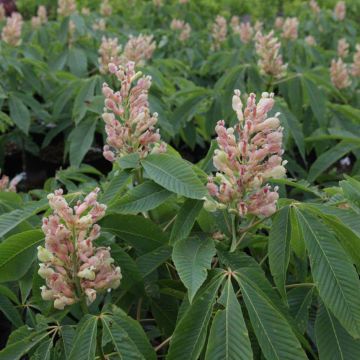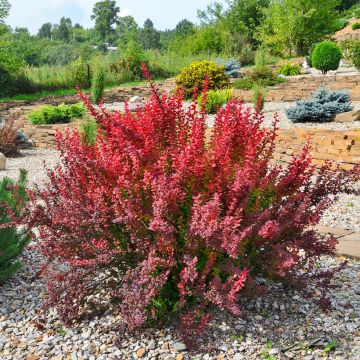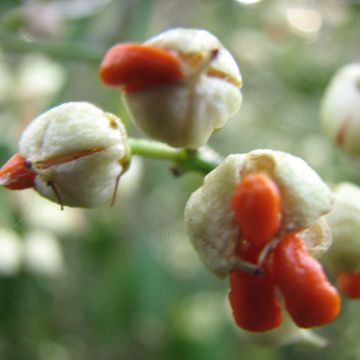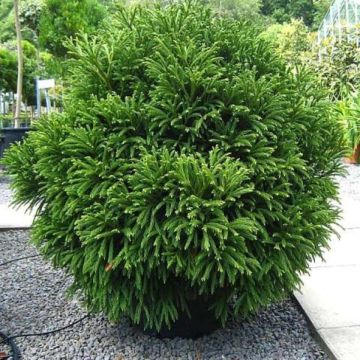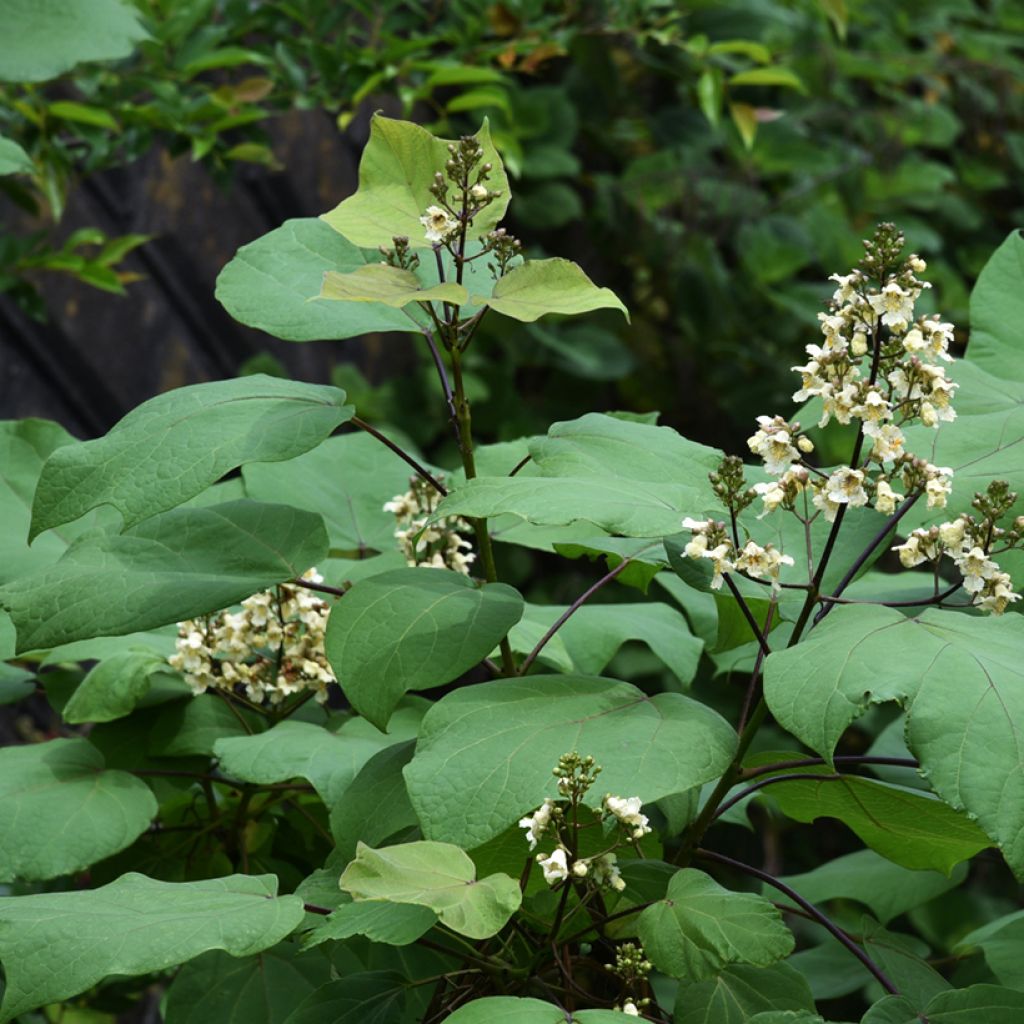

Catalpa ovata Slender Silhouette - Chinese catalpa
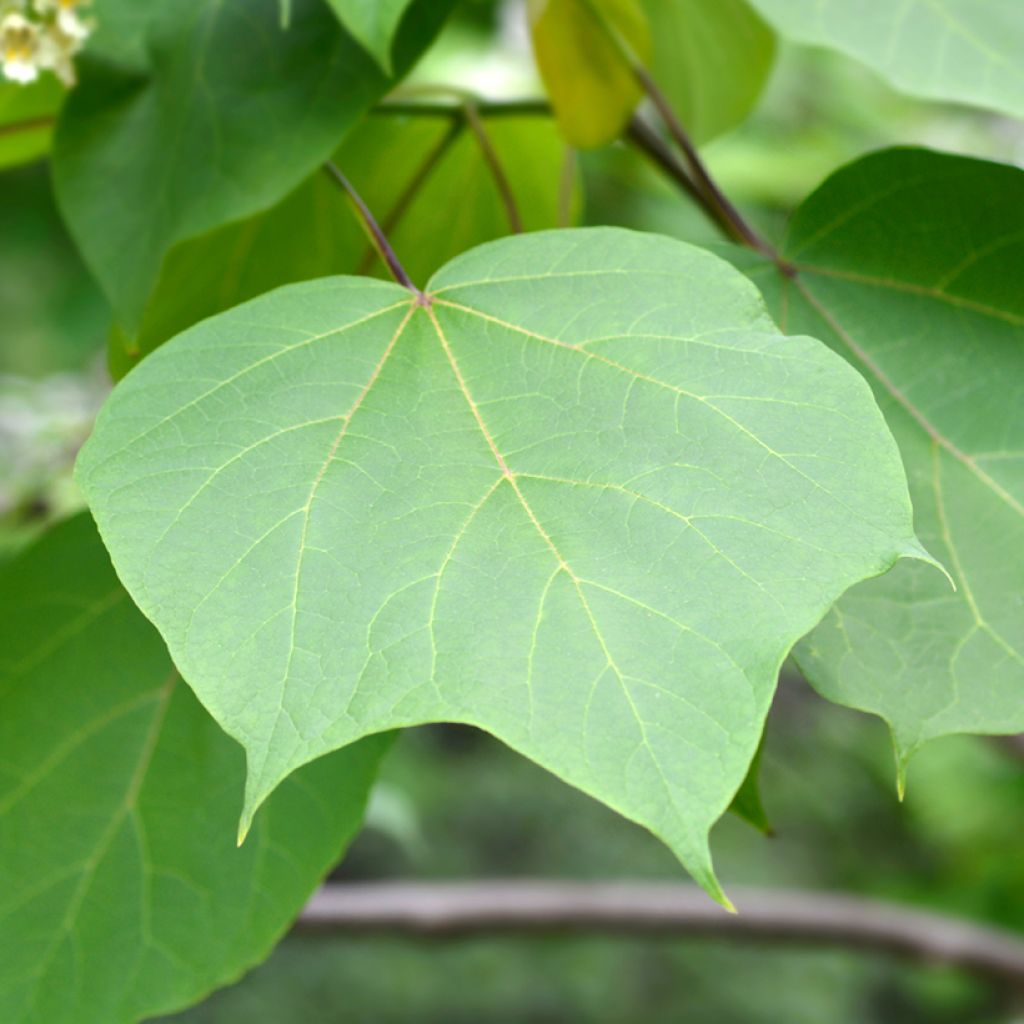

Catalpa ovata Slender Silhouette - Chinese catalpa
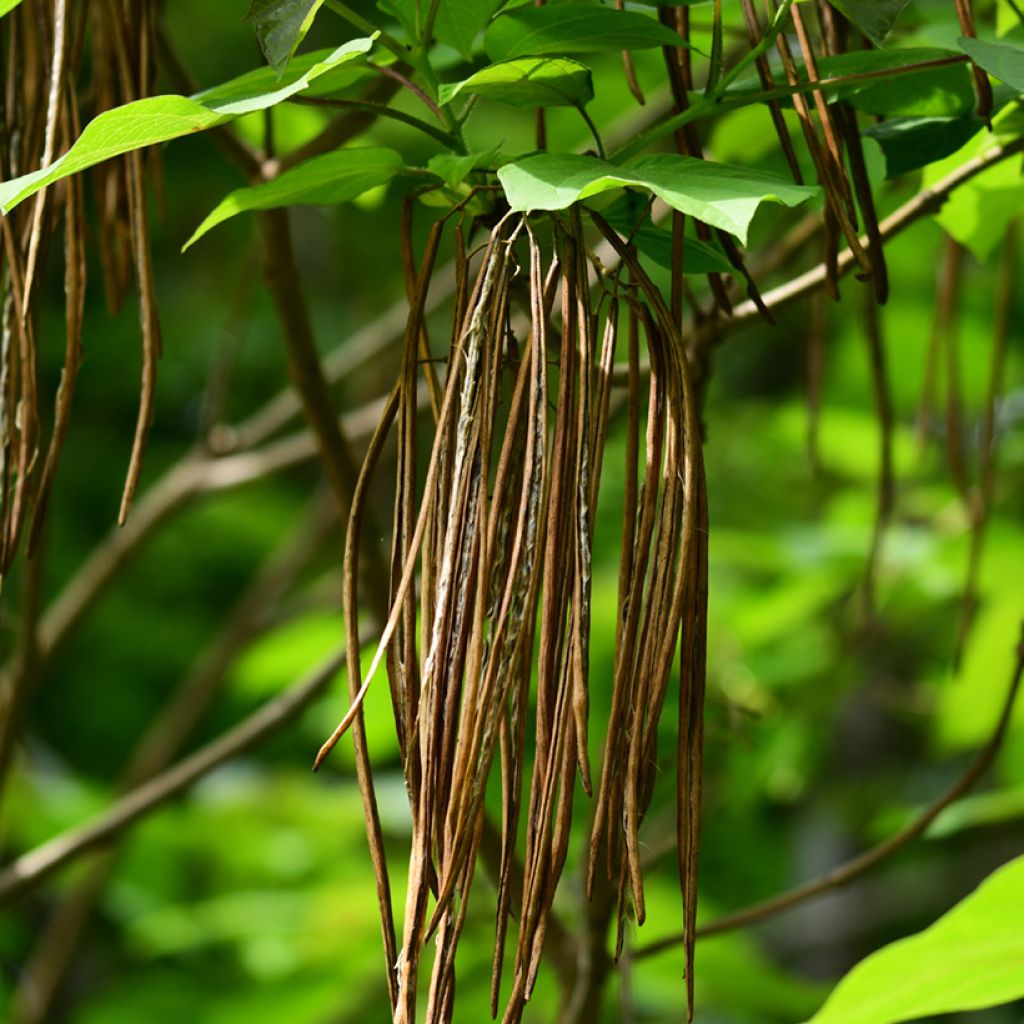

Catalpa ovata Slender Silhouette - Chinese catalpa
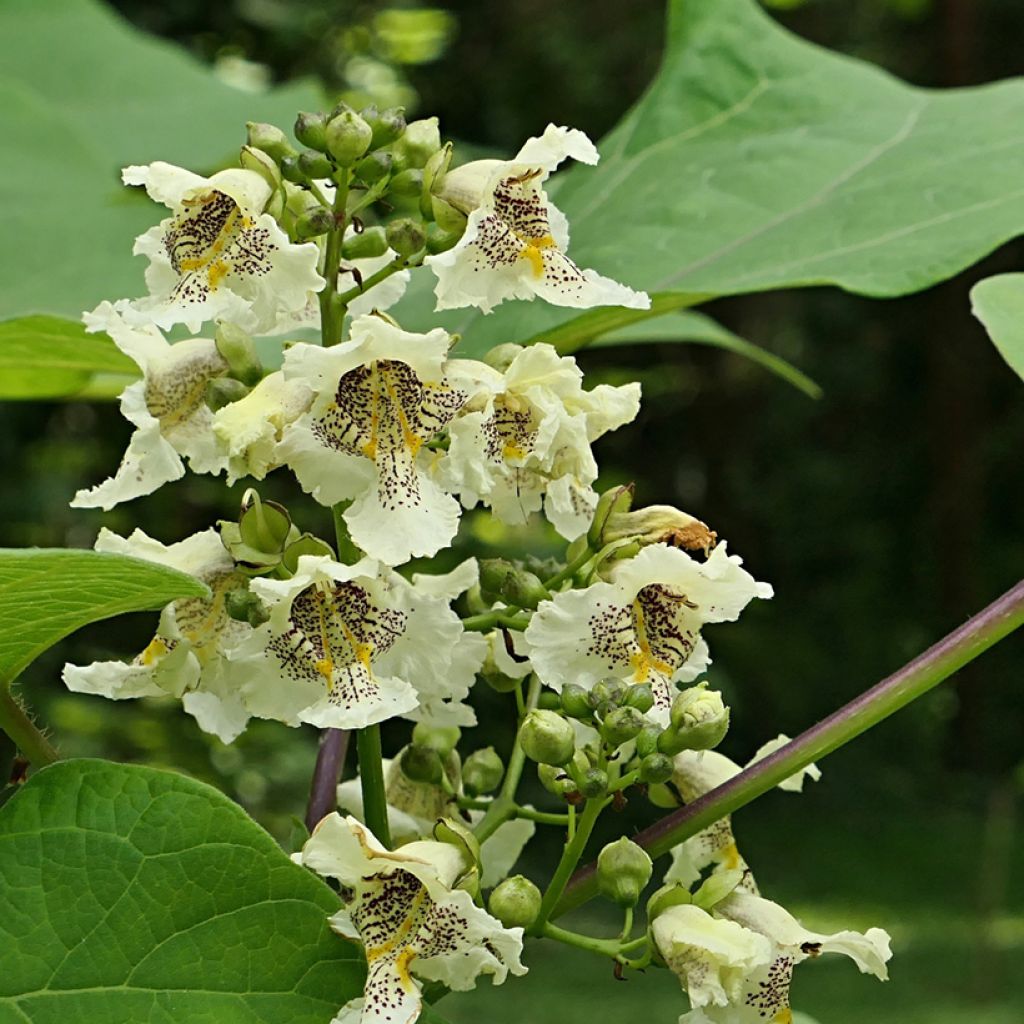

Catalpa ovata Slender Silhouette - Chinese catalpa
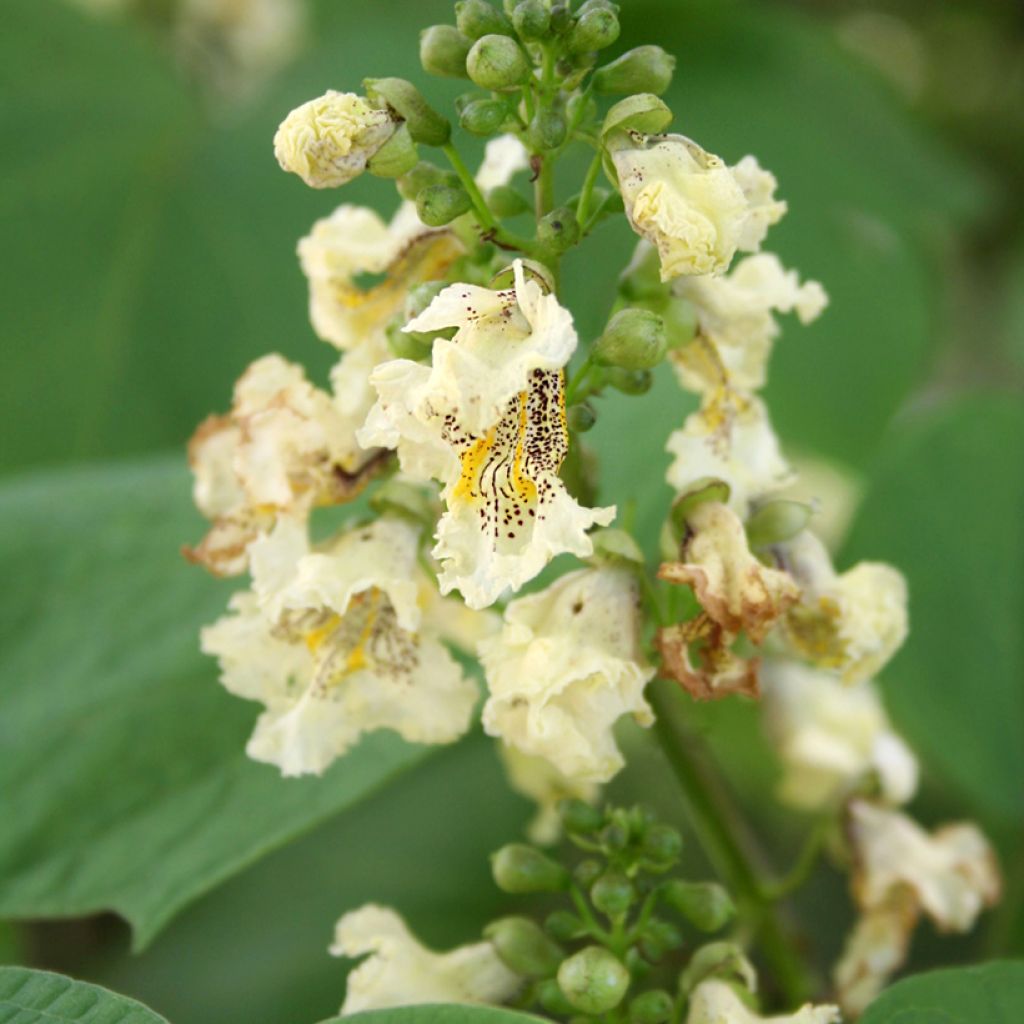

Catalpa ovata Slender Silhouette - Chinese catalpa
Catalpa ovata Slender Silhouette - Chinese catalpa
Catalpa ovata Slender Silhoutte
Yellow Catalpa, Chinese Catalpa
Home or relay delivery (depending on size and destination)
Schedule delivery date,
and select date in basket
This plant carries a 24 months recovery warranty
More information
We guarantee the quality of our plants for a full growing cycle, and will replace at our expense any plant that fails to recover under normal climatic and planting conditions.
Does this plant fit my garden?
Set up your Plantfit profile →
Description
The Catalpa ovata Slender Silhouette is a variety that is easily recognisable by its narrow, almost columnar habit, which is quite different from other cultivars that tend to spread in width as they age. Its large heart-shaped leaves, in a beautiful green colour, give it a very exotic, almost tropical appearance, even though it is very hardy. This impression is reinforced by its summer flowering, in the form of long panicles of yellow flowers that somewhat resemble orchids. This tree with its unique graphic design and silhouette is well-suited for small gardens, especially in urban areas. It tolerates most soils and thrives in full sun, or even in light shade.
Catalpa belongs to the Bignoniaceae family, which includes more than 800 species of shrubs, trees, and climbing plants that often produce magnificent blooms. The flowering vines Campsis, Bignonia, Podranea, and other Tecoma are good examples, and some trees have among the most beautiful blooms, such as the Jacaranda with its prodigious and prolific blue trumpets. There are 8 to 10 species of Catalpa, with the most common being C. bignonioides.
Catalpa ovata is native to China and Japan, where it forms a tree with a straight trunk, reaching approximately 15 m in height. In China, its wood has been highly valued since ancient times and used for various purposes. Slender Silhouette is a horticultural variety that looks quite different from the botanical species. Much more compact, it usually reaches a height of 6 m with a spread of only 2 m, presenting a very narrow, almost columnar habit. The young plants form extremely upright branches, with stems as green as the leaves, which then darken. The leaves have a truly graphic aesthetic, with their overall heart shape, sometimes with indistinct lobes. They can actually measure up to 30 cm long and display a vibrant green colour. Emerging late in the season, they precede the flowering that appears from June and lasts into July. Tall panicles, measuring up to 25 cm long, rise above the mass of leaves, carrying approximately thirty flowers with the typical shape of the Bignoniaceae family. The tubular base widens into an asymmetrical trumpet with undulating edges, in a cream-yellow colour, marked with purple specks in the centre and two orange macules, which extend into dotted patterns of the same hue towards the centre. This magnificent flowering enhances the tropical appearance of this tree and emits a light fragrance reputed to repel flies and mosquitoes. The fruit that follows the flowers is equally impressive in size, resembling large beans that can reach 35 cm in length. Initially green, they turn black and persist on the tree throughout winter, further enhancing the uniqueness of its silhouette.
This Catalpa, with its unprecedented habit, can withstand extreme cold temperatures down to -28°C, making it a valuable plant for creating an exotic scene in the gardens of colder regions. It can be combined with other evocative plants, such as the Pawpaw (Asimina triloba), a slow-growing small tree that produces mango-shaped fruits with a mango-like flavour. A clump of Fargesia nitida Red Dragon, a medium-sized non-running bamboo with beautiful burgundy culms that contrast pleasantly with the green leaves, would also be a good addition to your flowerbed. The delicate leaves of the bamboo will create a visual contrast with the luxuriant leaves of the Catalpa. And in slightly milder climates, consider planting some clumps of Swamp Hibiscus (Hibiscus moscheutos) with their huge, brightly coloured flowers to complete the exotic feel of your plant scene.
Report an error about the product description
Catalpa ovata Slender Silhouette - Chinese catalpa in pictures


Plant habit
Flowering
Foliage
Botanical data
Catalpa
ovata
Slender Silhoutte
Bignoniaceae
Yellow Catalpa, Chinese Catalpa
Cultivar or hybrid
Other Catalpa
View all →Planting and care
Plant your Catalpa ovata Slender Silhouette in a sunny location, possibly with some light shade. Be careful not to plant it in a windy area, as its wood is brittle. It appreciates any type of soil as long as it is deep and you provide good drainage; waterlogged soils can cause attack from wood-rotting fungi (such as honey fungus, a parasitic fungus that feeds on tree wood). The catalpa also does not appreciate overly dry soils, and it looks much better in fertile lands. Soak the root ball in a bucket for fifteen minutes, dig a hole 60 cm wide and deep during this time, and add planting compost by mixing it with the existing soil. Position the root ball in the hole, backfill around it and water generously to eliminate air pockets. In case of drought, water for a few weeks to promote root development. In late spring, apply a bit of potassium-rich organic fertiliser (choose an NPK fertiliser where the value of K is higher than that of N) to promote flowering.
Planting period
Intended location
Care
This item has not been reviewed yet - be the first to leave a review about it.
Similar products
Haven't found what you were looking for?
Hardiness is the lowest winter temperature a plant can endure without suffering serious damage or even dying. However, hardiness is affected by location (a sheltered area, such as a patio), protection (winter cover) and soil type (hardiness is improved by well-drained soil).

Photo Sharing Terms & Conditions
In order to encourage gardeners to interact and share their experiences, Promesse de fleurs offers various media enabling content to be uploaded onto its Site - in particular via the ‘Photo sharing’ module.
The User agrees to refrain from:
- Posting any content that is illegal, prejudicial, insulting, racist, inciteful to hatred, revisionist, contrary to public decency, that infringes on privacy or on the privacy rights of third parties, in particular the publicity rights of persons and goods, intellectual property rights, or the right to privacy.
- Submitting content on behalf of a third party;
- Impersonate the identity of a third party and/or publish any personal information about a third party;
In general, the User undertakes to refrain from any unethical behaviour.
All Content (in particular text, comments, files, images, photos, videos, creative works, etc.), which may be subject to property or intellectual property rights, image or other private rights, shall remain the property of the User, subject to the limited rights granted by the terms of the licence granted by Promesse de fleurs as stated below. Users are at liberty to publish or not to publish such Content on the Site, notably via the ‘Photo Sharing’ facility, and accept that this Content shall be made public and freely accessible, notably on the Internet.
Users further acknowledge, undertake to have ,and guarantee that they hold all necessary rights and permissions to publish such material on the Site, in particular with regard to the legislation in force pertaining to any privacy, property, intellectual property, image, or contractual rights, or rights of any other nature. By publishing such Content on the Site, Users acknowledge accepting full liability as publishers of the Content within the meaning of the law, and grant Promesse de fleurs, free of charge, an inclusive, worldwide licence for the said Content for the entire duration of its publication, including all reproduction, representation, up/downloading, displaying, performing, transmission, and storage rights.
Users also grant permission for their name to be linked to the Content and accept that this link may not always be made available.
By engaging in posting material, Users consent to their Content becoming automatically accessible on the Internet, in particular on other sites and/or blogs and/or web pages of the Promesse de fleurs site, including in particular social pages and the Promesse de fleurs catalogue.
Users may secure the removal of entrusted content free of charge by issuing a simple request via our contact form.
The flowering period indicated on our website applies to countries and regions located in USDA zone 8 (France, the United Kingdom, Ireland, the Netherlands, etc.)
It will vary according to where you live:
- In zones 9 to 10 (Italy, Spain, Greece, etc.), flowering will occur about 2 to 4 weeks earlier.
- In zones 6 to 7 (Germany, Poland, Slovenia, and lower mountainous regions), flowering will be delayed by 2 to 3 weeks.
- In zone 5 (Central Europe, Scandinavia), blooming will be delayed by 3 to 5 weeks.
In temperate climates, pruning of spring-flowering shrubs (forsythia, spireas, etc.) should be done just after flowering.
Pruning of summer-flowering shrubs (Indian Lilac, Perovskia, etc.) can be done in winter or spring.
In cold regions as well as with frost-sensitive plants, avoid pruning too early when severe frosts may still occur.
The planting period indicated on our website applies to countries and regions located in USDA zone 8 (France, United Kingdom, Ireland, Netherlands).
It will vary according to where you live:
- In Mediterranean zones (Marseille, Madrid, Milan, etc.), autumn and winter are the best planting periods.
- In continental zones (Strasbourg, Munich, Vienna, etc.), delay planting by 2 to 3 weeks in spring and bring it forward by 2 to 4 weeks in autumn.
- In mountainous regions (the Alps, Pyrenees, Carpathians, etc.), it is best to plant in late spring (May-June) or late summer (August-September).
The harvesting period indicated on our website applies to countries and regions in USDA zone 8 (France, England, Ireland, the Netherlands).
In colder areas (Scandinavia, Poland, Austria...) fruit and vegetable harvests are likely to be delayed by 3-4 weeks.
In warmer areas (Italy, Spain, Greece, etc.), harvesting will probably take place earlier, depending on weather conditions.
The sowing periods indicated on our website apply to countries and regions within USDA Zone 8 (France, UK, Ireland, Netherlands).
In colder areas (Scandinavia, Poland, Austria...), delay any outdoor sowing by 3-4 weeks, or sow under glass.
In warmer climes (Italy, Spain, Greece, etc.), bring outdoor sowing forward by a few weeks.



































